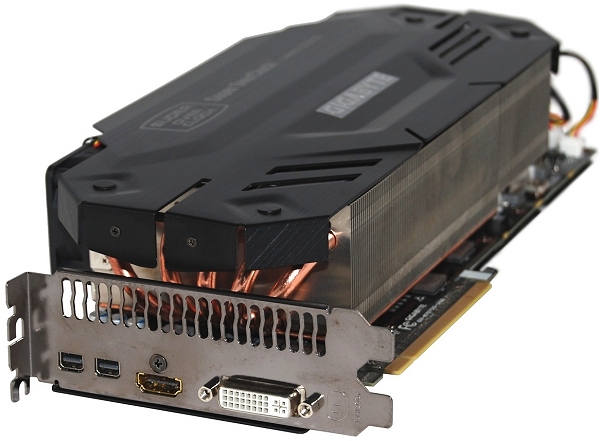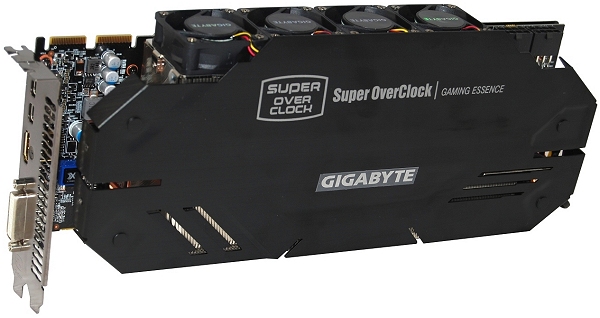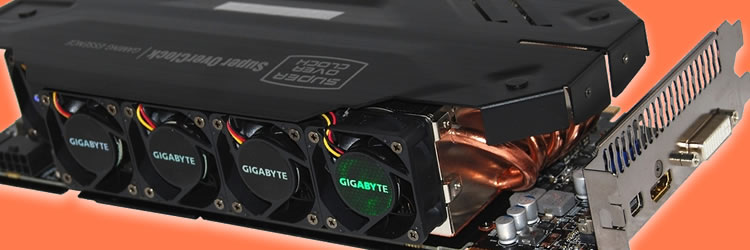Celebrating Tahiti's "half birthday" last month, AMD relaunched its Radeon HD 7970 with a factory-overclocked "GHz Edition" offering that increased the reference design's core clock speed from 925MHz to 1GHz with the intention of claiming the company now offered the world's fastest GPU. Unfortunately, the festivities were short-lived for several reasons.
Not only was it already possible to buy an HD 7970 running at those speeds and beyond, but AMD wasn't truly able to nab the performance crown back from Nvidia as the HD 7970 GHz Edition and the GTX 680 are about equal. Additionally, it was hard to get excited about such a marginal performance bump when it's associated with a $50 price hike.

To date, there are no official HD 7970 GHz Edition cards available and in hindsight, AMD could have collaborated with a board partner to deliver something more impressive. On the bright side, Gigabyte has taken matters into its own hands with the new HD 7970 SOC (Super OverClock) card, which seems to be far more interesting than AMD's solution.
It's been about a year since we reviewed the Gigabyte GeForce GTX 580 SOC which pushed a hot GF110 GPU 10% harder and still managed to provide an impressive amount of overclocking headroom using Gigabyte's OC Guru software. The Gigabyte Radeon HD 7970 SOC is an entirely different beast that sets a new standard for extreme air-cooled graphics cards.
Armed with five fans, nine heatpipes and a king-sized vapor chamber, one might consider the HD 7970 SOC to be overkill, and to that we say "hell yes!"
Our inner enthusiast has a penchant for all things impractical – even if they're tough to recommend from a value perspective. Let's move on and see what Gigabyte's premium offering brings to the table.
Super OverClock Radeon HD 7970
The herculean HD 7970 SOC measures 11.4" (29cm) long, which is the actual PCB length, as the cooler doesn't overhang the board. In comparison the PCB of the standard HD 7970 measures 10.4" (26.5cm) long and roughly 11.0" (28cm) with the cooler.

As you'd expect, Gigabyte has completely redesigned the HD 7970 PCB, upgrading various critical components. The company markets these upgrades under the "Ultra Durable VGA+" banner which includes NEC/TOKIN Proadlizer 5 (film capacitors) which are said to provide amazing current capacity and extremely low ESL/ESR for better overclocking. By using a bank of five proadlizers, they transmit more stable power even during heavy loads.

The HD 7970 SOC exclusively uses Japanese solid capacitors which contain a solid organic polymer, while electrolytic capacitors use a common liquid electrolyte. This is said to make them more durable while providing better electronic conductivity.

Gigabyte also uses Ferrite Core Chokes comprised of an iron-oxide compound that holds energy much longer than common iron-core chokes at high frequencies. Also used are Low RDS (on) MOSFET's which are specially designed to produce lower switching resistance for faster electric current charging and discharging.

All this is found on a 2oz copper PCB, which is twice the amount of copper inner layer found on traditional PCBs. In the past, Gigabyte has said that doubling the amount of copper improves heat dissipation efficiency from critical areas of the component such as the GPU power zone.
More details and photos on the next page. Benchmarks follow right after that.
